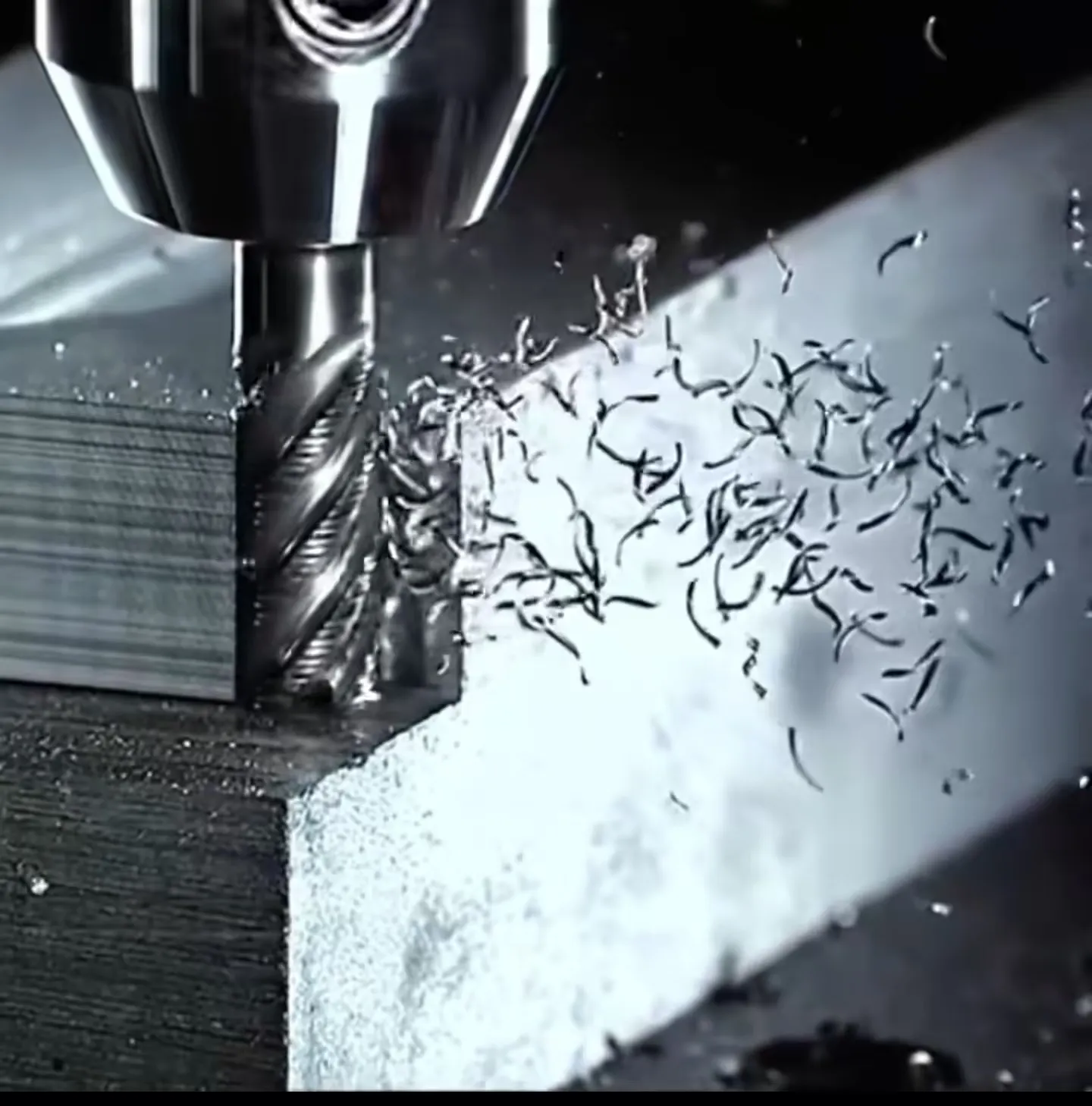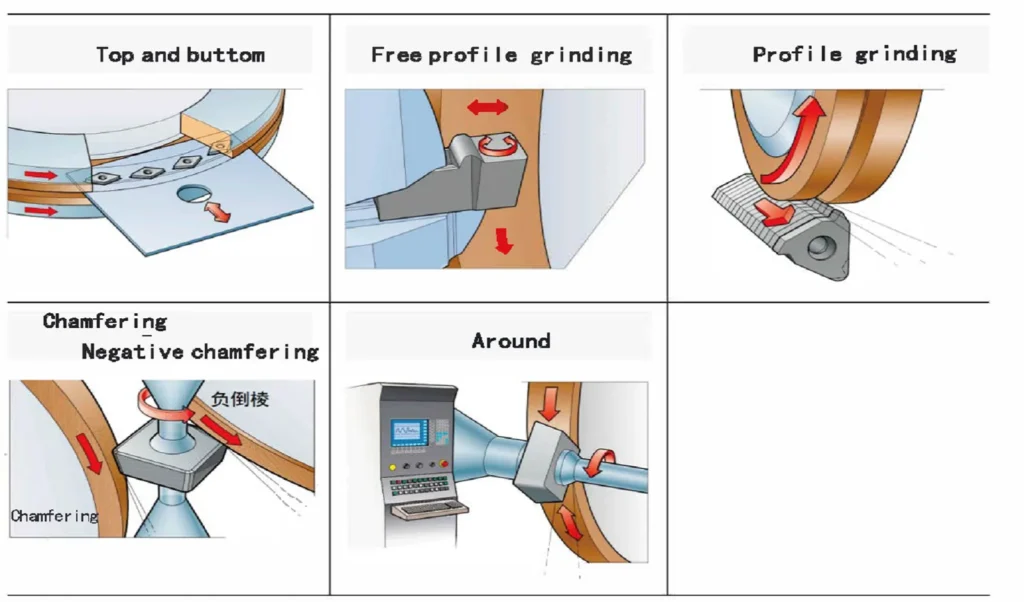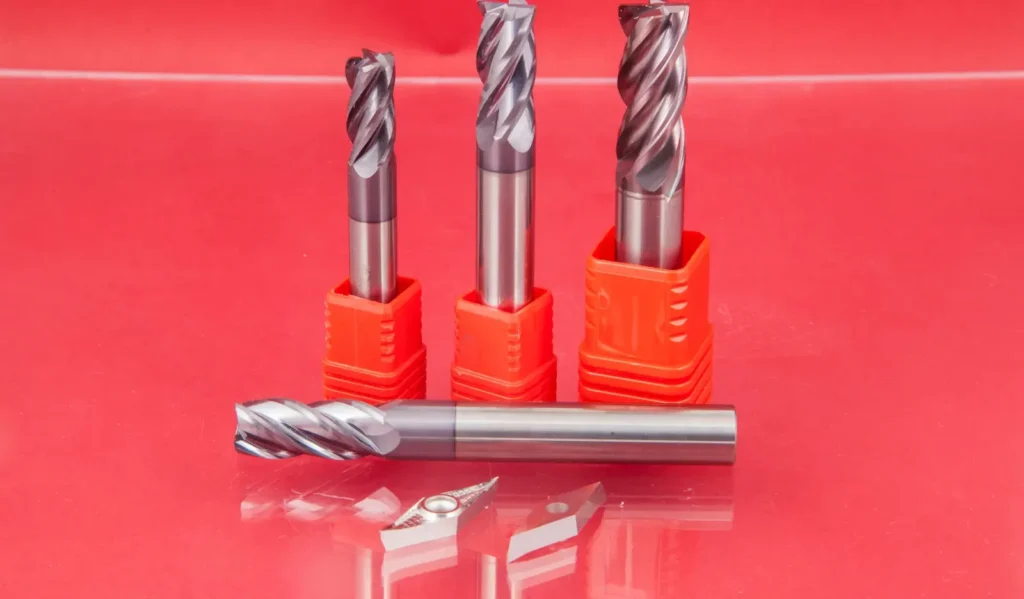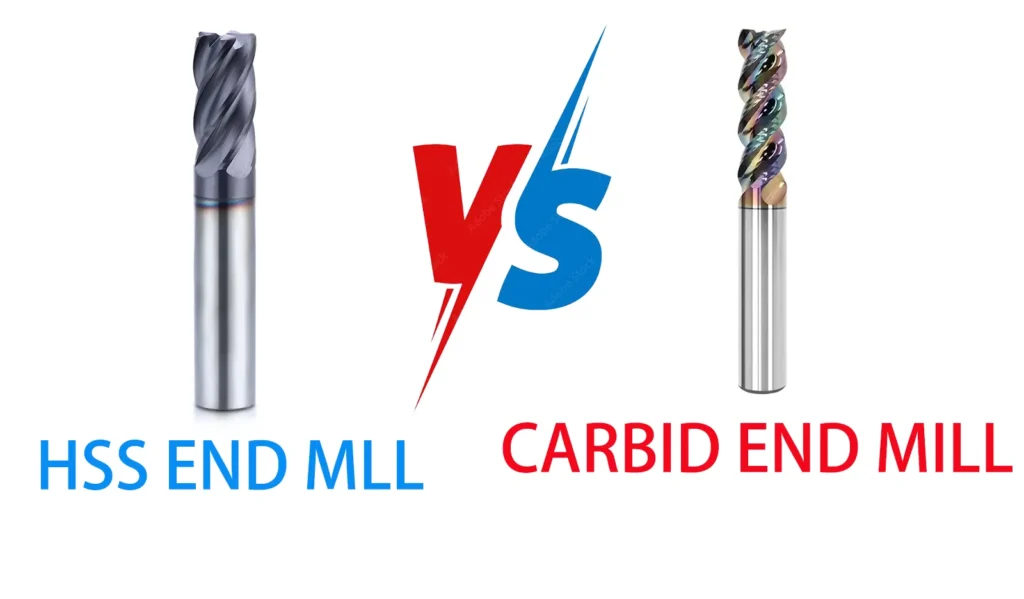在精密加工的世界裡,了解粗加工與精加工立铣刀之間的區別,對於達到最佳加工效果至關重要。這兩種切削工具在加工過程中扮演不同的角色,各自對最終產品的品質與效率有所貢獻。本綜合指南將探討粗加工與精加工立铣刀的特性、應用與主要差異,協助您在加工專案中做出明智的決策。
瞭解粗加工與精加工立铣刀:概述
在金屬加工和 CNC 加工中,選擇粗加工立铣刀還是精加工立铣刀會對專案的品質和效率產生重大影響。這兩種銑刀在加工過程中都有特定的用途,而了解它們的獨特之處,對於達到優異的加工效果是非常重要的。

粗加工立铣刀:特性與應用
粗加工立铣刀 是專為快速有效地去除大量材料而設計。這些堅固耐用的切削工具有其獨特之處:
- 粗齒幾何形狀
- 深槽設計可有效排屑
- 直徑較精加工立铣刀大
- 更強的切削刃可承受高切削力
粗加工立铣刀主要用於以快速材料切削為主要目標的加工初始階段。它們的優勢在於
- 掏空口袋
- 建立初始輪廓
- 為後續精加工作業準備工件
精加工立铣刀:特點與用途
與粗加工的立銑刀相反,精加工的立銑刀是專為精密度和表面品質所設計。主要特性包括
- 細齒幾何
- 淺凹槽使表面處理更平滑
- 直徑較小,適合複雜的細節
- 切削刃更銳利,切割更乾淨
精加工立铣刀用於加工的後期階段,以達到加工目的:
- 高品質表面處理
- 嚴格公差
- 精確的尺寸和幾何形狀
粗加工與精加工立铣刀:主要差異為何?
粗加工立铣刀和精加工立铣刀的主要区别在于它们的设计和预期用途。粗加工立铣刀的優先考量是材料去除率而非表面光潔度,而精加工立铣刀則是要達到精確的尺寸與優異的表面品質。
主要差異包括
- 齒形幾何:粗加工立铣刀的刀齿较粗,而精加工立铣刀的刀齿较细。
- 刀槽深度:粗加工立铣刀的刃深用于排屑,而精加工立铣刀的刃浅用于平滑切削。
- 切削刃強度:粗加工立铣刀具有更强、更坚固的切削刃,可承受更大的切削力。
- 尺寸精度:精加工立铣刀專為更小的公差和更精確的尺寸而設計。
| 特性 | 粗加工立铣刀 | 精加工立铣刀 |
|---|---|---|
| 主要目的 | 快速材料移除 | 實現精確的尺寸和表面光潔度 |
| 牙齒幾何 | 粗,有較大的溝槽 | 很好,有較小的溝口 |
| 長笛深度 | 深槽排屑 | 淺凹槽使切割更順暢 |
| 直徑 | 一般較大 | 通常較小,適合複雜的工作 |
| 尖端強度 | 堅固耐用,可承受高切削力 | 更銳利,切割更乾淨、精準 |
| 典型進料速率 | 較高(每齒 0.004 吋至 0.012 吋) | 較低(每齒 0.001 吋至 0.004 吋) |
| 切割深度 | 可達到更大的切割深度 | 較淺的切割深度可達到精確度 |
| 表面處理 | 粗糙 | 更平滑 |
| 尺寸精度 | 不太精確 | 高精度 |
| 材料移除率 | 高 | 低 |
| 重度使用下的工具壽命 | 堅固的設計可延長使用壽命 | 如果用於重型材料移除,則較短 |
| 典型應用 | 剔除材料,創造粗糙形狀 | 精細加工,達到最終尺寸 |
| 加工過程的階段 | 初始階段 | 最後階段 |
| 晶片形成 | 較大的晶片 | 較小的碎屑或切屑 |
| 切割力 | 更高 | 較低 |
| 震動和雜音 | 更耐震 | 更易受震動影響 |
| 成本 | 一般較昂貴 | 視情況而定,標準尺寸可能較便宜 |
| 工件應力 | 可在工件上產生更多應力 | 最小應力誘導 |
粗加工立铣刀值得嗎?
投資粗加工立铣刀可以顯著提高加工效率和刀具壽命。以下是值得考慮的原因:
- 更快的材料切削速度:粗加工立铣刀的材料切削速度是標準立铣刀的 5 倍。
- 縮短加工時間:粗加工立铣刀可快速去除大块材料,显著缩短整个项目的时间。
- 延長刀具壽命:將切削力分散到更大的區域,可減少粗加工立铣刀的磨損。
- 改善精加工效果:正確使用粗加工立铣刀可以在精加工過程中獲得更好的結果。
雖然粗加工立铣刀的初始成本可能較高,但其在節省時間和提高效率方面的優勢往往超過投資。

粗加工進給率與精加工進給率有何差異?
進給率對粗加工和精加工立铣刀的性能起著關鍵作用。了解進給率的差異對於最佳化加工製程至關重要:
粗加工進給速率
- 一般高於精加工進料率
- 每顆齒通常介於 0.004″ 到 0.012″ 之間
- 以最大化材料移除率為目標
- 可能導致粗糙的表面處理
精加工進給率
- 低於粗加工進給率
- 通常每顆齒 0.001″ 到 0.004″ 不等
- 專注於達到平滑的表面處理
- 尺寸精度優先於材料去除率
具體的進給率會因材料特性、刀具幾何形狀和所需表面光潔度等因素而異。必須參考製造商的建議並進行試切,以確定特定應用的最佳進給率。
粗軋機的用途是什麼?
粗銑機的主要目的是有效率地去除工件上的大量材料,為後續加工作好準備。主要目標包括
- 快速移除材料:快速將工件縮小至近淨形狀
- 消除應力:去除材料外層的應力
- 改善精加工結果:為精加工作業建立一致的起點
- 減少精加工工具的磨損:透過去除大部分材料,粗銑刀可延長精銑工具的使用壽命
透過在加工的初始階段使用粗加工銑刀,製造商可以大幅縮短整體生產時間,並改善成品零件的品質。
粗加工立铣刀有哪些用途?
粗加工立铣刀可应用于各种加工操作,包括:
- 袖珍銑削:從封閉的區域快速移除材料
- 輪廓分析:建立初始輪廓和形狀
- 開槽:切割寬溝槽或槽
- 面銑:從平面移除材料
- 切入式切割:對工件進行深切割
這些多用途工具在下列產業中特別有用:
- 航太業:加工大型結構組件
- 汽車:製造發動機缸體和變速箱外殼
- 模具製作:粗加工模腔
- 一般製造:為精加工作業準備工件
最佳化您的加工程序:何時使用每種類型
為了讓您的加工專案達到最佳效果,瞭解何時使用粗加工立铣刀與精加工立铣刀是非常重要的:
何時使用粗加工立铣刀
- 材料移除的初始階段
- 當處理堅硬或難以加工的材料時
- 適用於需要快速移除庫存的專案
- 為精加工作業準備工件時
何時使用精加工立铣刀
- 加工的最後階段
- 需要嚴格公差時
- 實現高品質的表面處理
- 處理複雜細節或複雜幾何形狀時
在您的加工製程中,策略性地使用粗加工和精加工立铣刀,可以優化效率、刀具壽命和整體零件品質。
結論:平衡粗加工與精加工以達到最佳效果
了解粗加工立铣刀與精加工立铣刀的細微差異,對於獲得優異的加工效果至關重要。利用每種立铣刀的優點,製造商可以優化加工流程,以提高效率、品質和成本效益。
請記住,粗加工和精加工立铣刀之間的選擇並不總是二選一。在許多情況下,結合兩種類型會產生最佳結果。透過仔細考慮材料特性、專案需求和預期結果等因素,您可以制定出一個加工策略,讓粗加工和精加工立铣刀都能發揮最大的效益。
隨著加工技術的不斷發展,請隨時瞭解切削刀具設計和加工策略的最新發展。透過不斷精進粗加工與精加工立铣刀的方法,您將能夠裝備就緒,自信且精準地處理最具挑戰性的加工專案。



